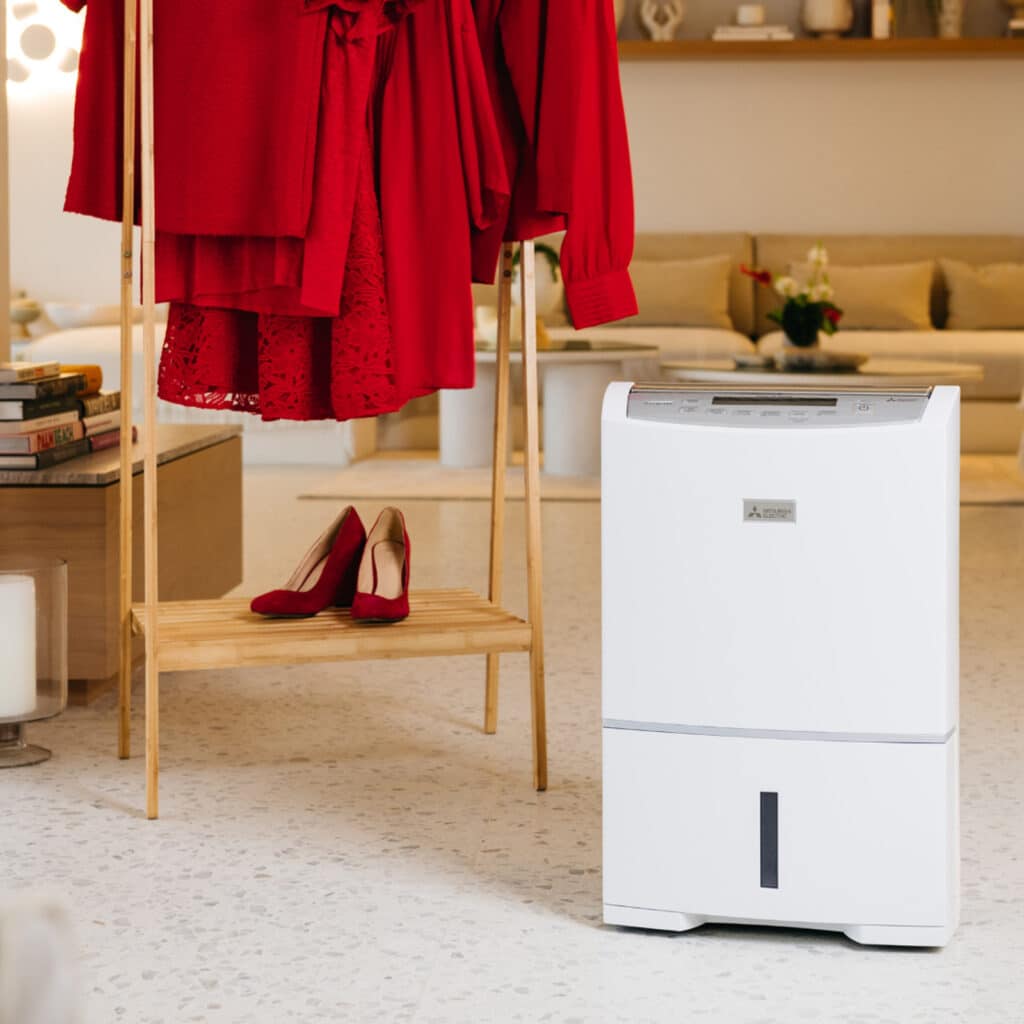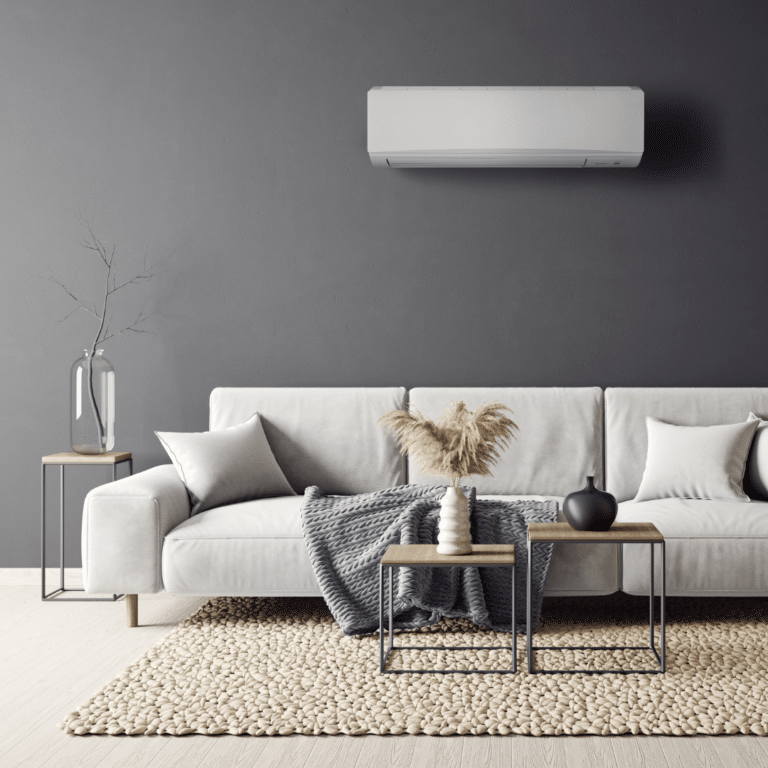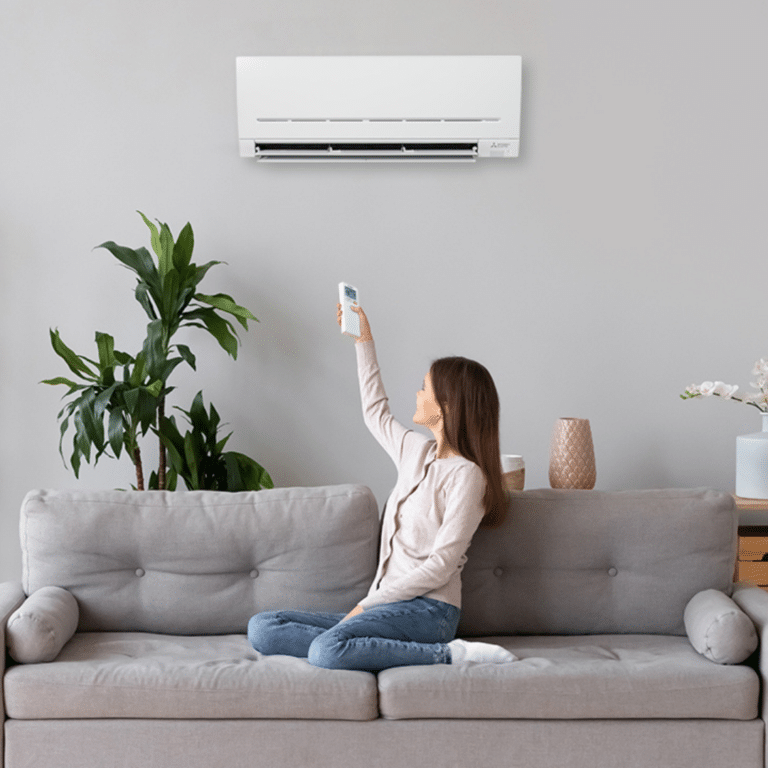As winter arrives and the cold, wet weather sets in, we tend to focus on keeping ourselves warm and cosy. While heating systems play a crucial role, we often overlook another important factor that affects our overall comfort and well-being: humidity levels.
Controlling Humidity
Excessive moisture in the air can lead to a range of issues, including condensation, mould and mildew growth, and musty smells. Many people may not realise that an air conditioner running in heating mode does not provide dehumidification1, which is why, if you experience high moisture levels in your home, owning a dehumidifier during winter may be necessary.
With the use of a dehumidifier, you can easily transform your home into a comfortable space by regulating indoor humidity levels. In addition, some dehumidifiers offer a valuable feature known as laundry mode, which allows for efficient and hassle-free drying of clothes during the winter months.
On those damp, rainy days when using a dryer isn’t ideal, or when you have delicate fabrics that require extra care, a dehumidifier can be your ultimate laundry ally. With the ability to dry laundry inside, dehumidifiers offer a convenient solution for reducing drying times and maintaining a comfortable and moisture-free indoor environment. It’s important to note that drying laundry indoors without a dehumidifier can lead to excessive moisture build-up within your home, making a dehumidifier an essential companion for this task.
Intelligent Laundry Mode
Intelligent Laundry Mode control is available in the Mitsubishi Electric EV38HR-A dehumidifier. This advanced model is equipped with sophisticated technology that intelligently adjusts the airflow rate while constantly monitoring the humidity levels in the room. It estimates the drying time for your laundry, stopping automatically once the clothes are dry.
This Intelligent Laundry Mode is beneficial for quickly and effectively drying shoes and clothes without compromising delicate fabrics. By carefully regulating the drying process, it can help prevent shrinkage, colour fading, or damage to your garments.
Investing in a dehumidifier with Intelligent Laundry Mode not only saves you time and energy but also provides peace of mind. You no longer have to worry about damp clothes taking forever to dry or resorting to using energy-intensive dryers. Instead, you can enjoy the convenience of indoor laundry drying, knowing that your dehumidifier will optimise the process while maintaining a more comfortable living environment.
A dehumidifier that can dry laundry indoors is a valuable addition to any home. The Intelligent Laundry Mode feature, like that found in the Mitsubishi Electric EV38HR-A dehumidifier, takes this convenience to the next level by precisely controlling airflow, monitoring humidity levels, and automatically stopping when your laundry is dry. Other great features include Inverter Technology and a moisture removal capacity of up to 38 litres per day.2 Say goodbye to long drying times this winter and hello to efficient and effective laundry drying, all thanks to the power of dehumidifiers.
For more details about the features of the Mitsubishi Electric EV38HR-A dehumidifier, or to find your nearest stockist go to https://www.mitsubishielectric.com.au/product/mj-ev38hr-a-dehumidifier/
1 See https://www.mitsubishielectric.com.au/blog/do-i-need-a-dehumidifier-if-i-have-an-air-conditioner/ for more information
2 Dehumidifies up to 38 litres of moisture per day – measured at Room Temperature 30°C / Relative Humidity 80%



